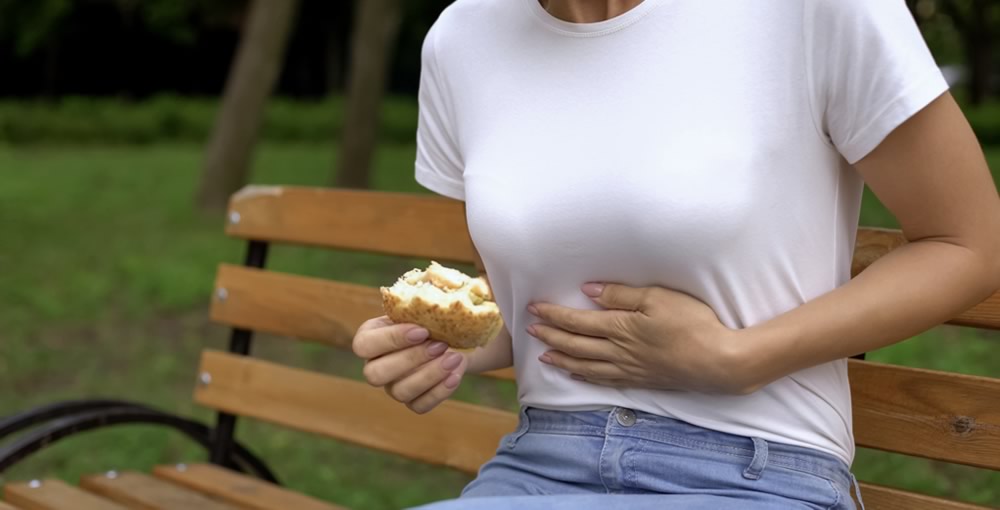How do I know if I have food poisoning?
February 13, 2020

5 remedies for when food becomes our foe
If you are 1 of the 6 Americans who have felt that rumbling and gurgling in your gut that keeps you tethered to the bathroom in fits of vomiting and diarrhea swearing never to eat food again, you most likely have experienced food poisoning.
Roughly 48 million people in the U.S. contract a food-borne illness each year, and roughly ninety percent of acute illness that includes nausea, vomiting and diarrhea is food-related.
But how do you know if it’s a stomach flu or food poisoning?
“Food poisoning symptoms come on quickly. Most cases begin within 2-4 hours of eating contaminated food,” says Texas MedClinic Chief Medical Officer Dr. David Gude. “A stomach flu comes on slowly; roughly over a 24 to 48-hour time period after being exposed to a person who has stomach flu, and a stomach flu is most often accompanied by a fever.”
It is possible, but rare, for food poisoning to occur days or weeks after eating contaminated food.
According to Gude, most people with food poisoning will feel better in 1-3 days.
“The most important thing for a person to do when inflicted with food poisoning is to stay hydrated,” says Gude. “Dehydration from food poisoning can lead to hospitalization. Those most at risk for dehydration are the very young or old, and those who have significant health problems.”
If food poisoning has you or a loved one down for the count, here are 5 tips to keep you hydrated and on the road to wellness:
- Stay hydrated by sucking on popsicles or ice chips.
- Drink electrolytes.
Coconut water, watermelon water, sports drinks, and Pedialyte are the most common drinks with electrolytes. It will help keep you hydrated and replenish vital minerals and vitamins you have lost while you are sick. Drink 2-4 ounces at a time; and drink slowly. - Let your stomach settle. Do not introduce food for 4-5 hours after a bout of vomiting or diarrhea.
- Introduce bland foods slowly. Think BRAT diet: bananas, applesauce/apples/apple jam, rice and toast.
- Avoid milk or dairy products, anything fried, greasy, fatty or spicy, raw vegetables and food high in proteins like steak, pork or salmon.
If food poisoning symptoms continue past 3 days, or you have noticed blood in your vomit or stool (including black, tar-like stool), call your doctor or go to your closest urgent care facility.
You should also consult a doctor if frequent episodes of vomiting prevent you from keeping liquids down, you have a temperature greater than 100.4, and/or extreme pain or abdominal cramping.
If you are experiencing dizziness, weakness, rapid heartbeat or breathing, haven’t urinated or urine is a dark yellow color, or excessively thirsty, you are showing signs of dehydration and should seek medical help immediately.
What causes food poisoning, and how do I prevent it?
Raw foods of animal origin are the most likely to be contaminated, specifically raw or undercooked meat and poultry, raw or lightly cooked eggs, unpasteurized (raw) milk, and raw shellfish.
Fruits and vegetables also may get contaminated, especially if not properly washed or washed in contaminated water.
While certain foods are more likely to make you sick, any food can get contaminated in the field, during processing, or during other stages in the food production chain, including cross-contamination with raw meat in kitchens.
“Two sources of food contamination that people overlook are can openers and cutting boards,” says Gude.
Being diligent in cleaning all food preparation surfaces in the kitchen and washing vegetables and fully cooking meats and eggs can reduce the risk of food borne illnesses.
The CDC recommends 4 simple rules for preparing food:
- Keep it clean.
Before you eat or handle food, wash your hands, food prep tools and surfaces. - Cook to the right temperature.
Use a food thermometer to check that foods are cooked to the right temperature. 165 degrees for chicken and 165 degrees for ground beef. - Watch the clock.
Throw out perishable food if it’s been sitting at room temperature for more than 2 hours; 1 hour if it’s 90 degrees or warmer. - Serve at the right temperature.
Serve hot foods at 140 degrees or warmer and cold foods at 40 degrees or colder.
Texas MedClinic was established in 1982 by Dr. Bernard T. Swift, Jr., as a group medical practice that specializes in urgent care and occupational medicine. Texas MedClinic has grown to 19 locations in San Antonio, New Braunfels, Austin, and Round Rock. Texas MedClinic is staffed with 82 medical providers including physicians, physician assistants and nurse practitioners and over 450 employees.





